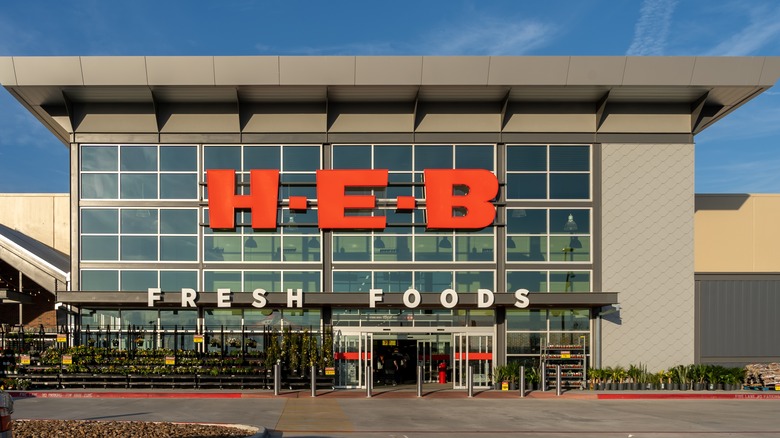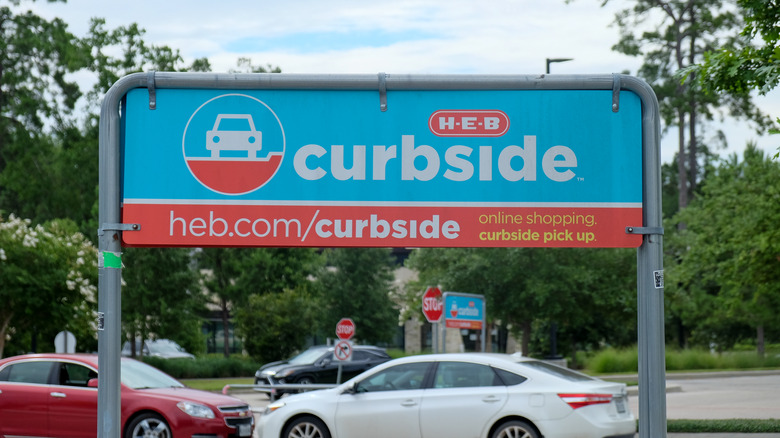How H-E-B Is Dominating The Online Grocery Game
As Texans already know, H-E-B is one of the more popular grocery stores to shop in. With locations throughout the Lone Star state and Mexico, the mid-size retailer cannot be found in most of the U.S. but that hasn't stopped the chain from being a force to be reckoned with. The retailer's branded products like the Sashimi-grade H-E-B sushi, fresh-baked cakes, and variety of seltzers have helped to garner the store a powerfully loyal customer base.
Surprisingly, when compared to other retail giants the smaller chain was up against, H-E-B has topped Dunnhumby's first-ever e-Commerce Retail Preference Index (RPI). Even beating out e-commerce goliath Amazon and Amazon Fresh. For a grocery store with storefronts in only one state and Mexico, being the number one preferred e-commerce shop is no small feat.
To see just how the local chain beat out stores with worldwide brand recognition, Grocery Dive dug deep and found that the store's digital shopping tools resonated the most with online shoppers.
How H-E-B won over the internet
Starting slow and strategic, H-E-B launched its Curbside Pick-up back in 2015. Now a popular way for shoppers to get their groceries, the program has scaled up (via Grocery Dive). However, the perhaps biggest strides were made when H-E-B acquired Favor in 2018 and launched the My H-E-B app in 2019. Through the use of Favor's tech, its app, and a loyal consumer base built throughout the decades, H-E-B had a solid online shopping platform at the start of the pandemic. When the pandemic suddenly moved our shopping online, H-E-B's pre-existing e-commerce tools and easy-to-use platform via their app resonated with their already loyal customers and helped catapult the regional chain into a massive online success.
H-E-B having its own user-friendly online store was the biggest factor that drove them to the top of the list. This factor is more important than even pricing. The major difference between omnichannel shopping and only brick-and-mortar shopping is the lack of time for those who choose to shop online. According to Grocery Dive, ease of access and reliability is more important to those shoppers than price. Customers who shop online may have different needs than those who shop in person.
The mid-size retailer beating out Amazon and other giants for e-commerce preference shows that name recognition isn't everything, customers want a well-thought-out shopping experience, even if it is on a screen.

